COVID-19 has pushed many organizations go the online route to continue business. The Government’s e-Office initiative is meant to take the government working online. It was initially launched in 2008 during the UPA. Here is a detailed explainer on the initiative.
The lockdown imposed across the country to contain the spread of COVID-19 has disrupted the regular proceedings in many walks of life. The fear of infection has restricted the movement of people despite the lockdown relaxations.
One of the major changes observed during this time is the shift to online services. Most of the businesses have started providing online services and there has been a general expansion in the scope of and the demand for online services.
While private enterprises are making an effort towards an online shift, what about the government? Are the any initiatives driven by the government to shift its working online?
We take a look at one such online initiative of the government, ‘e-Office’, which was launched years ago.
E-Office is a Mission-Mode project as part of e-Governance Initiatives
The Second Administrative Reforms Commission has in its 11th report emphasized the need for implementing e-Governance as a key step towards achieving good governance. The report titled ‘Promoting e-Governance: The SMART Way Forward’ was released in December, 2008 and laid down the goals and the broader framework for developing e-governance initiatives across the central government as well the state governments. The emphasis was to use technology to transform the governance to provide better services to citizens.

Even prior to this, there have been isolated efforts taken up by governments at different administrative levels to bring technology into governance and make it more efficient. However, the need for developing a holistic framework was identified in this report. The National e-Governance Plan (NeGP) was formulated by Department of Information Technology (DIT) and Department of Administrative Reforms & Public Grievances (DAR&PG).
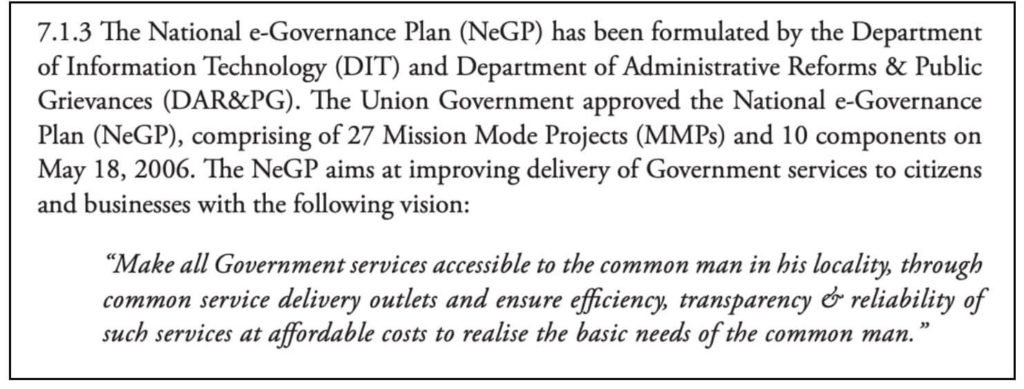
The then UPA government approved 27 Mission Mode Projects (MMPs) under NeGP on 18th May, 2006 out of which e-Office is one of the MMPs, with DAR&PG identified as the nodal agency for implementing the project.
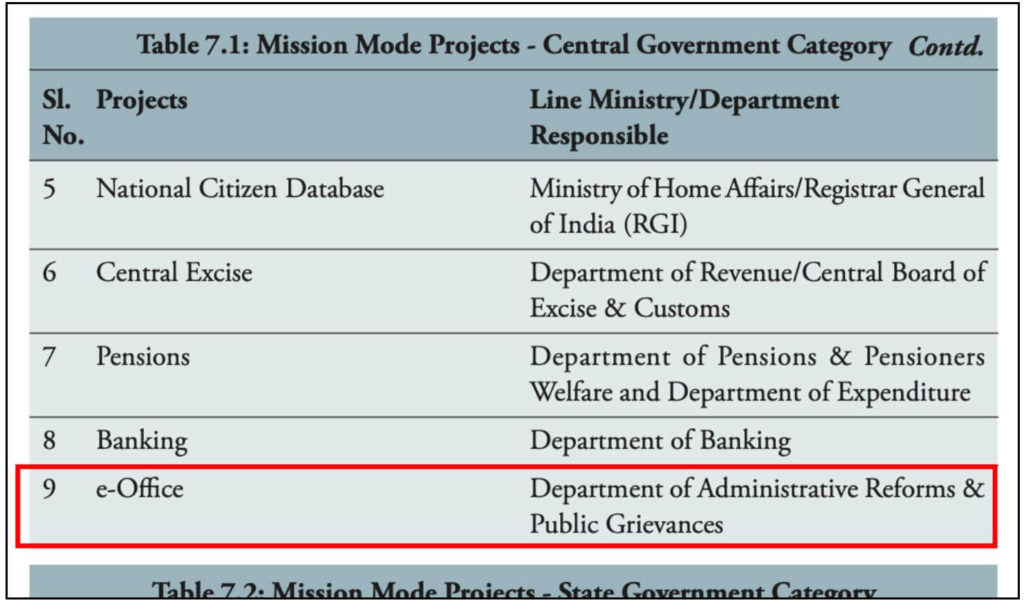
e-Office is aimed at improving government process and Service delivery mechanisms
e-Office was approved by the Cabinet to be implemented as part of the 11th Five Year Plan. e-Office is a ‘paper-less initiative’ with the main aim to significantly improve the operational efficiency of Government Ministries and Departments through improvement in the workflow mechanism and office procedure manuals.
The Objectives laid out for e-Office are to improve productivity, quality, resource management, turnaround time and increase transparency in the age old manual process in government offices with an electronic files system.
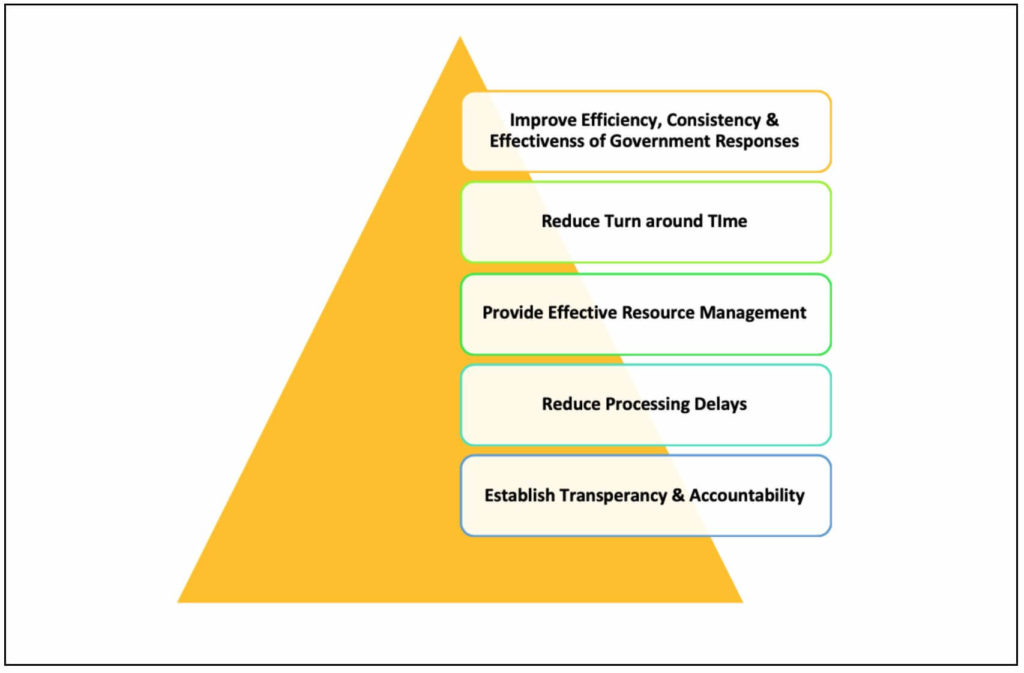
The vision of E-office is to achieve a simplified, responsive, effective & transparent working of all government offices. e-Office is built on ‘Open Architecture’ platform which enables it to be a reusable framework that can be replicated across the governments at central, state and district level.
The integrated file and record management systems developed under e-office help to:
- Manage content
- Search for data internally and collaborate
- Electronic movement and tracking of files
- Archival and retrieval of data
- Automation of routine tasks
- Monitoring and auto-escalation in case of delays.
Initially, when the project was launched in 2008, the expectation was to convert government offices into paperless offices within a period of 5 years. The project was launched in the following 3 pilot sites in September’2010:
- DAR&PG
- Training Division of DoP&T (Department of Personnel and Training)
- e-Governance Division of Department of Information Technology
7 Key products developed by e-Office
Over a period of time, e-Office under the aegis of National Information Centre has developed 7 products as part of the e-Office Suite.

- e-file: Files are an integral part of the government processes. This includes creation of files, notings in the file, decision making at various levels, issue of decisions through letters and notifications. e-File helps in improving productivity in these internal processes of governance along with increasing the transparency and bringing in citizen participation as part of inclusive governance.

- KMS: Knowledge Management System is an Enterprise Documents Management System. KMS developed by e-Office helps the users in creating and managing electronic documents that can be viewed, searched and shared. It can keep track of different versions modified by various users. It is a key step towards e-governance with Governments having to manage large volumes of documents like – Policies, Forms, Acts & Regulations, Circulars, Guidelines & Standards, Manuals etc. It helps in creating a repository where all the ministries & departments can access the files.
- e-Leave: It is an automated workflow-based system that was developed to apply, track and get the details of leaves. It helps to eliminate the paper-based process and enables time-bound processing.
- e-Tour: The purpose of e-Tour is to facilitate an efficient online management of employee tour programme and remove the hassles of paper work involved.
- SPARROW: This system provisions for electronic filling of Performance Appraisal Reports (PAR) by Officers and provides for a online system based comprehensive appraisal dossier for each service member of the respective State & Central Government. It helps in reducing the delays in submission of PARs.

- PIMS: Personnel Information Management System (PIMS) helps in maintaining the details of the employees. These include identity, skill sets, contact details, postings, nominations, loans, salary details etc.
The features provided by the aforementioned 6 services are highlighted in the below infographic.
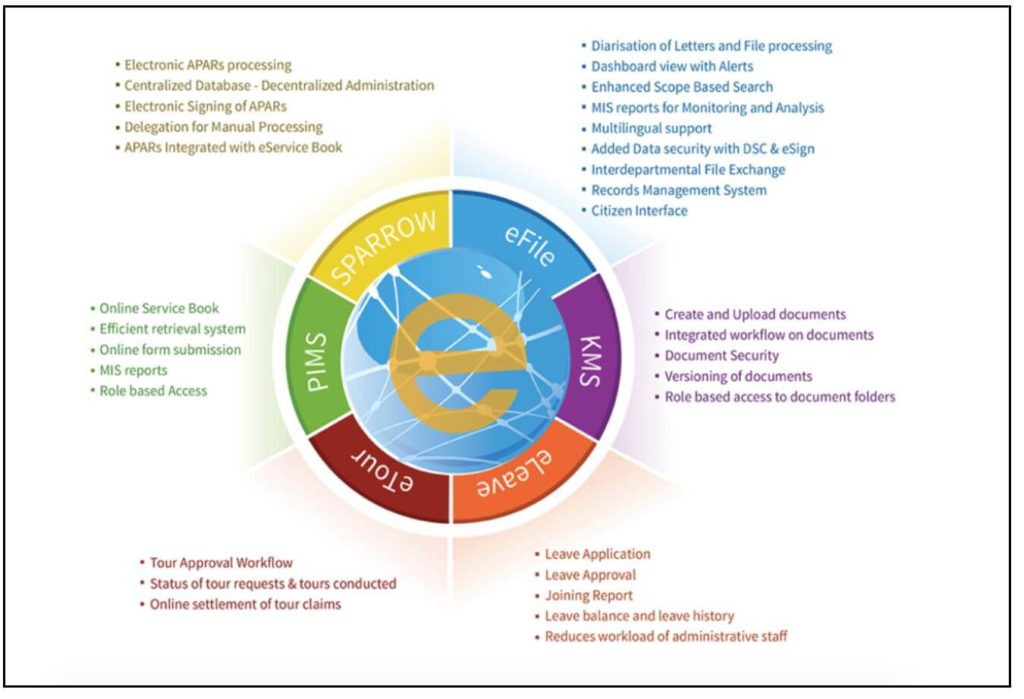
Apart from these 6 products, CAMS (Collaboration & Messaging Services) is the 7th product developed as part of e-Office suite. It facilitates effective communication and sharing of information in real time. It uses Open Architecture which enables the integration of different e-Office Services.

More than 400 different Ministries & Departments of Central & State Government use e-Office
As per the information of provided on e-Office website, as on date, a total of 454 clients across different departments and ministries of the Central Government and different State governments that are using e-Office suite of products.
Type | No. of Departments | Remarks |
Central | 238 | |
State | 214 | |
SPV | 1 | Goods and Services Tax Network (GSTN) |
International | 1 |
Prior to 2014, about 96 departments of Central Government used e-Office, which has more than doubled in the past 6 years to 238. A steeper increase is observed in various departments of different state governments. Prior to 2016, only 45 departments across state governments used e-Office which has more than quadrupled during the six-year period of 2014-20. There have no new implementations recorded post 2018.
Departments in the states of West Bengal, Punjab, Andhra Pradesh, Karnataka, Assam, Telangana, Tamil Nadu, Delhi, Odisha, Madhya Pradesh, Uttar Pradesh, Maharashtra & Kerala are among the states which have adopted e-Office. The extent of departments adopting e-Office in each of these states is not the same and varies in each of the states.
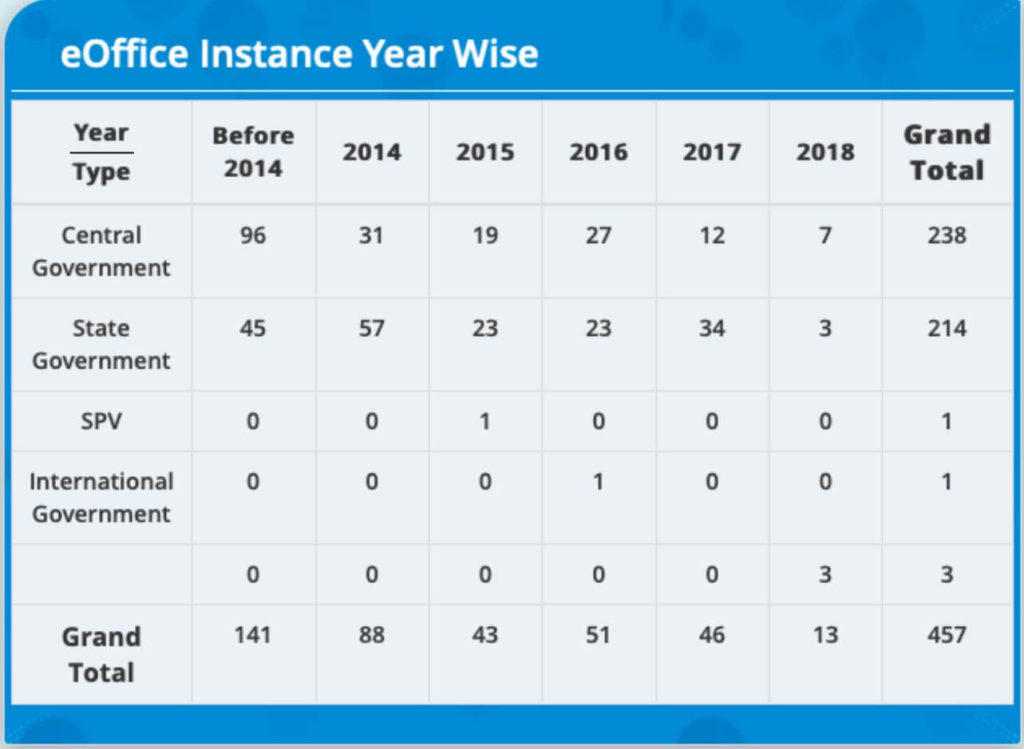
India is categorized as a ‘High’ EGDI countries as per UN E-Governance Survey-2020
The United Nations E-Governance Survey Categorizes the countries into four different categories as per EGDI ( E-Governance Development Index) with the categories being:
- Very High
- High
- Medium
- Low
As per the latest survey conducted in 2020, India is categorized as ‘High’ in E-Governance Development Index. South Africa, Mexico, Iran, Indonesia, most of Latin American countries are under this category.
USA, Canada, Brazil, Argentina, China, Russia, Australia, Thailand, Singapore and most of Western European Countries etc. are categorized as ‘Very-High’ on EGDI.
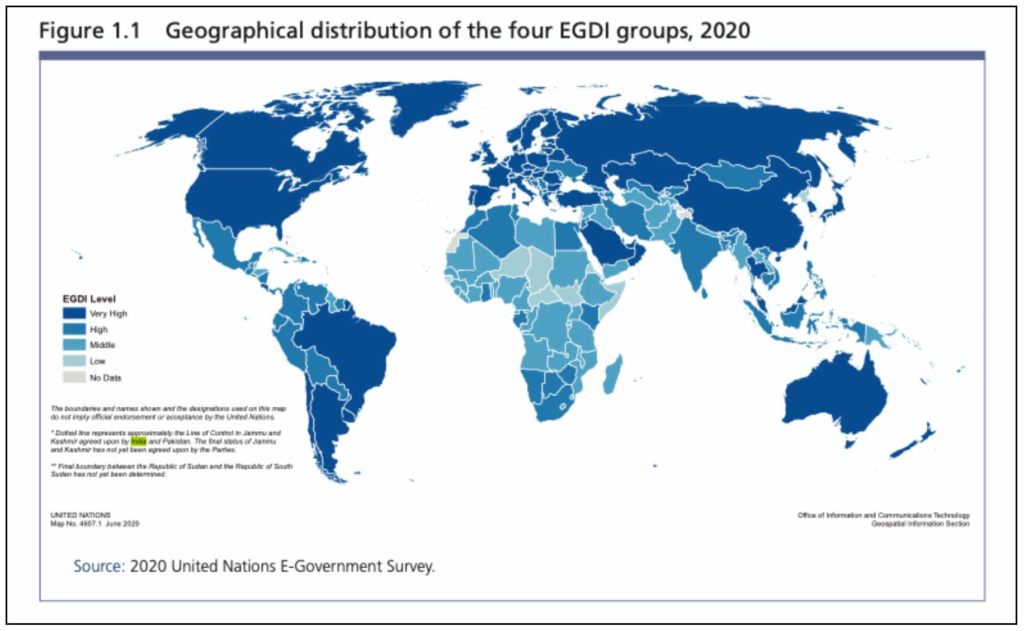
India earlier broke into the top 100 of e-governance rankings for the first time in 2018. Most of the countries categorized under ‘Very High’ under EGDI are developed countries, with others being rapidly developing countries. E-governance forms a key component of India’s push towards a developed nation.
Ease of transacting in governance has a ripple effect on its interaction with the public which forms a key feature of a participative democracy. The initiative towards digital online transactions is considered favourably in India’s climb up the rankings. Taking advantage of the current times to encourage online transactions and services of the government could further bolster India’s position in these rankings.


